How Often Should I Groom My Dog?
Aside from keeping your dog pretty or handsome, grooming is an important part of maintaining their health. Here are some tips on knowing when your pup needs a little freshening up.
Aside from keeping your dog pretty or handsome, grooming is an important part of maintaining their health. Here are some tips on knowing when your pup needs a little freshening up.
by Mollie Jackman, | August 22, 2024

Ibex.media / Stocksy
Pet-parent aesthetic preferences aside, grooming your dog is actually more important to their well-being than you’d think. It helps maintain your pup’s health, comfort, and appearance. Your dog’s needs may vary depending on more personalized factors such as their breed breed, coat type, and lifestyle. But a visibly dirty or matted coat, odor, or overgrown nails are also signs that it’s time for them to get groomed. Whether you prefer grooming your dog at home or going to a professional, this guide — created for both first-time and longtime pet parents alike — can help you make the right decisions.
If you’re wondering, how often you should take your dog to the groomer — these rules of thumb are a great start. “Just like people, dogs need continued grooming, whether a bath or a full haircut, to maintain healthy skin and coat,” says Amy Osterman, a Fear Free certified professional pet groomer and owner of Kinder Grooms with Amy. Keep in mind that each dog may have unique needs based on their breed, coat type, and lifestyle. Here are some of the basics of dog grooming for beginners, at home or at the groomers.
If you’re new to grooming dogs, you can start with the basics. Brush your dog regularly to prevent mats and tangles. This should be done daily for some breeds, while others may only need weekly brushing. (We’ll get into coat types shortly.) Regular brushing also helps distribute natural oils, promoting a healthy, shiny coat.
Adjust your grooming frequency during shedding seasons or extreme weather conditions to keep your dog comfortable. More frequent grooming may be beneficial during heavy shedding periods in spring and fall, and the dry winter season is a good time to work on preventing dry skin with moisturizing shampoos and regular brushing.
Regularly check your dog’s ears, eyes, and nails. Clean their ears to prevent infections, especially if they have floppy ears. Trim their nails regularly to avoid overgrowth, which can lead to pain or difficulty walking. If you have a new puppy, it’s a good idea to start these habits early so they can get used to grooming.
“Grooming is a stressful experience even for the most docile dog. They’re being handled from head to tail…and not all dogs enjoy that,” Osterman notes. To ensure a stress-free experience, whether you’re grooming your pup at home or using a pro, start early and take it slow to acclimate your puppy using positive reinforcement techniques. According to Osterman, some of the benefits of using a Fear Free professional groomer are that you minimize stress for your pup (as best as possible), give them one-on-one attention (that means no cage time — even for drying), and build a relationship between dog and groomer to reduce stress over time.
Whether you’re a new dog parent learning how to groom a dog at home, or just want to know more about how often to take them to the groomer, it’s important to consider a consistent grooming schedule. Your dog’s specific coat type determines how often they need brushing, bathing, and trimming.
“If the dog has a naturally long coat or double coat (such as a Yorkie, Shih Tzu, Poodle, Doodle, Golden Retriever, or Husky), they should seek help from a professional,” Osterman says. However, even with professional grooming, pet parents still play a crucial role in maintaining their dog’s coat health. “Guardians still need to maintain the coat in between grooming for optimal skin and coat health, but any long- or double-coated dog is prone to matting without routine brushing.”
Below, we break down how often you should bathe and groom your dog based on the most common coat types. We’ll also cover when a professional might be more helpful than at-home dog grooming. Keep in mind that whether you have a small dog, medium dog, or large dog, their grooming frequency may be the same.
Coat Type | Timing | Tools | Expertise Needed |
Long-haired breeds | Brush daily to prevent tangles and matting. Bathe every 4 to 6 weeks. | Slicker brush, wide-tooth comb, dog-specific shampoo | Moderate to high: regular professional grooming may be necessary |
Short-haired breeds | Brush weekly to reduce shedding. Bathe every 8 to 12 weeks. | Bristle brush, rubber curry brush, mild dog shampoo | Low: most grooming can be done at home |
Double-coated breeds | Brush 2 to 3 times a week, especially during shedding seasons. Bathe every 6 to 8 weeks. | Undercoat rake, slicker brush, de-shedding tool | Moderate: consider professional grooming during times of shedding |
Curly/woolly coats | Brush 2 to 3 times a week to prevent mats. Bathe every 4 to 6 weeks. Regular trims every 6 to 8 weeks. | Slicker brush, scissors, clipper, dog conditioner | High: frequent trims and professional grooming are often required |
Recognizing when your dog needs grooming helps keep them comfortable and healthy. Certain visual and behavioral cues can indicate that it’s time to groom your dog.
A dull, matted, or dirty coat is a clear indication your dog needs grooming. Overgrown nails can affect your dog’s ability to walk comfortably, and visible debris or tear stains around the eyes and ears signal the need for a bath.
If your dog is frequently scratching, biting, or licking their fur, they may be trying to alleviate discomfort caused by mats, tangles, or skin irritations. Additionally, if your dog seems restless or is constantly shaking their head, it could indicate ear issues that need attention.
Increased shedding during spring and fall is a natural response to changing weather, signaling the need for more frequent brushing. In winter, dry and flaky skin may require more moisturizing shampoos or conditioners to keep your dog’s skin healthy and hydrated. Seasonal allergies can also affect your pup’s coat and skin, leading to itchiness and hot spots.
A noticeable odor, especially from the ears or mouth, can indicate the need for a bath, ear cleaning, or dental care.
If your dog is shedding more than usual, it could be a sign they need brushing or have an underlying skin condition.
Visible skin irritation or redness could mean your dog needs a soothing bath, or that there’s an underlying issue like allergies or parasites that requires attention.
In addition to brushing and haircuts, a few other grooming tasks need to be done regularly. These include dental hygiene, trimming nails, and caring for sensitive areas like ears and paws.
Brushing teeth: It’s recommended that you brush your dog’s teeth at least three times a week to prevent dental disease and maintain oral health.
Trimming nails: Keep your dog’s nails trimmed to avoid discomfort and potential injury from overgrowth.
Cleaning ears: Regularly check their ear flaps for dirt and debris, and use a wet wipe to clean them. Look for symptoms of infection.
Anal gland care: Occasionally, dogs may need their anal glands expressed to prevent blockages or discomfort.
Paw care: Check and clean your dog’s paws regularly, trimming fur between the pads and removing any debris.
No breed is truly hypoallergenic. But breeds often considered “hypoallergenic” (or less likely to trigger allergies in some people) include Poodles, Bichon Frises, and Portuguese Water Dogs. These dogs tend to shed less and produce fewer allergens, making them more suitable for people with allergies.
The cost of owning a dog can vary based on the breed, size, and care needs. Initial adoption fees typically range from $50 to $500, with ongoing expenses like food, grooming, and vet care costing between $1,000 and $3,000 annually. Planning for these expenses ensures you’re prepared to provide the best care for your new companion.
Dogs with floppy ears or long hair around their ears may need weekly cleanings, while others can be cleaned monthly or as needed.
Use a dog-specific nail clipper and trim just the tips to avoid cutting the quick (that pink- to red-colored, blood-filled cavity that runs down the center of the toenail), which can cause pain and bleeding.
Some short-haired dogs may never need to be professionally groomed. Follow our guide, above, to learn how often to brush and bathe your short-haired dog. And don’t forget to keep up with cleaning their teeth and ears.
“All dogs could benefit from professional grooming, but ones with long or double coats definitely need professional [grooming]. Nail and ear care is also important,” Osterman says. Pet parents can generally manage the coats of breeds and mixes with short hair, but regular professional grooming can help with nail and ear care.
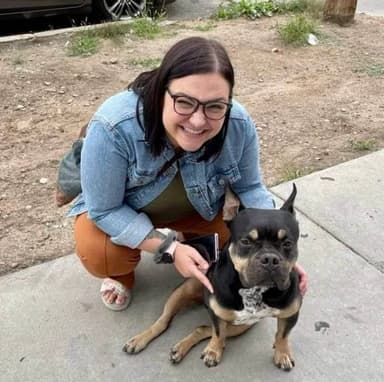
Mollie Jackman is a writer, editor, and graduate of Lindenwood University’s MFA in writing. She’s also a pet parent to a goofy big-eared dog and two brown tabby cats, plus a rotating cast of foster animals. When she’s not reading, writing, or picking up strays, she can be found binge-watching arguably terrible reality TV shows and cooking competitions or rolling around the local skating rink in Columbia, Missouri. Mollie’s writing on this site is not in any way affiliated with the University of Missouri, or her work as a copywriter for MU Health Care.

Adoption Advice
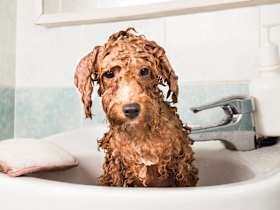
Behavior & Training
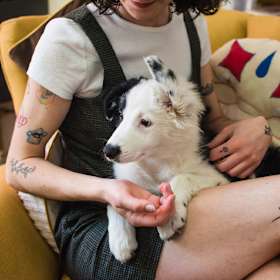
Adoption Advice
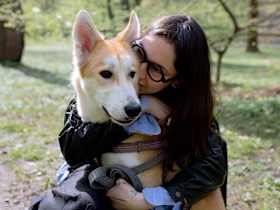
Breed Info
Plus, five things to know before adding one of these mixed-breed dogs to your family.

Breed Info
These dogs turn heads everywhere they go — just be ready to brush (a lot).
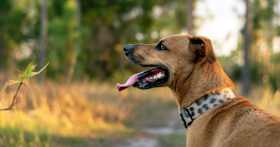
Adoption Advice
Microchipping your dog significantly increases the likelihood of a happy reunion if your pup ever gets lost.
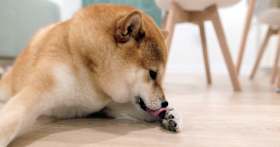
Behavior & Training
Licking can indicate anything from affection to anxiety to things just tasting good. Here’s what it may mean for your dog, plus tips on how to lessen the behavior.
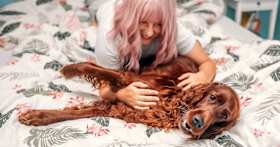
Breed Info
Get ready to meet the ultimate in outdoorsy and outgoing pups with these Irish Setter mixed breeds.
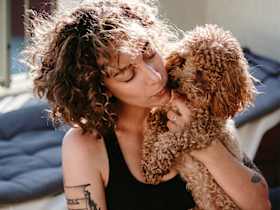
Breed Info
There’s no such thing as a truly hypoallergenic dog (sorry).
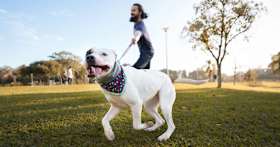
Behavior & Training
Why do dogs pull on the leash? Learn why and get tips on what to do when your dog pulls.

Adoption Advice
Cat introduction process not going well? Here’s what might be causing the issues.
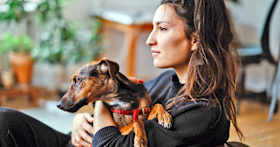
Shelters & Rescue
Sometimes life happens, and you need a temporary home for your pet while you get back on your feet. Here’s what to do.